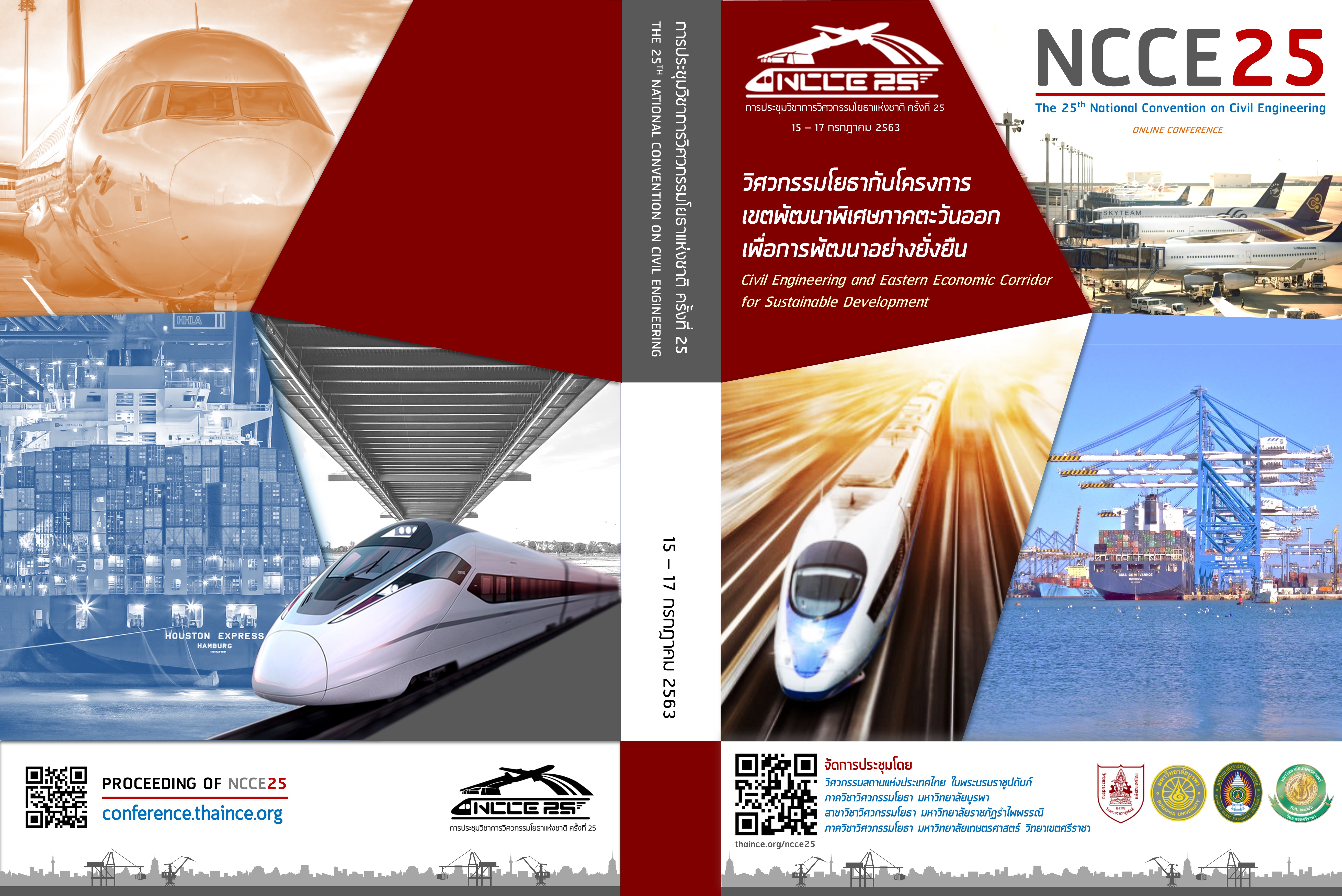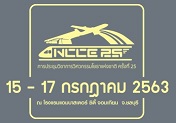Soft clay improvement using kaolin-Rice husk ash geopolymer activated by sodium hydroxide
Keywords:
geopolymer, unconfined compressive strength, Sodium hydroxide, durabilityAbstract
This research studied the improvement of Bangkok clay using kaolin - rice husk ash activated by sodium hydroxide. Kaolin (KA) was thoroughly mixed with rice husk ash (RA) in the proportion of KA: RA 90:10, 80:20, 70:30, 60:40 and 50:50. The mixture was then activated by sodium hydroxide solution of 8 molar concentrations at the optimum moisture content. The maximum unconfined compressive strength (qu) was obtained from sample with KA: RA 70:30 which was used as soil stabilizing agent. The clay samples were treated by KA-RA geopolymer replacement of 10, 20, 30, 40, and 50% by weight of dry soil. The samples were cured at 25, 70, and 100°c for 7, 14, 28, 60 and 120 days. Engineering properties were tested including unconfined compressive strength, durability in term of wetting and drying condition, and permeability. Clay sample replaced by 30% KA-RA geopolymer at curing period 60 days and curing temperature 70°c exhibited qu 115.38 ksc, which is close to qu at curing temperature 100°c but the advantage is more energy saving. Moreover, unconfined compressive strength after 12 rounds of wet and dry conditions was 93.55 ksc which comply with the ASTM D559 A permeability coefficient (k) is 7.25 x 10-7 cm/s which can be used as impervious material and extends service life as well.
Downloads
References
135
[2] Davitdovits, J., “Properties of Geopolymer Cements”, In Kiev (Eds.), Proceedings of The First International Conference on Alkaline Cements and Concretes, Scientific Research Institute on Binders and Materials, Kiev State Technical University, Kiev, Ukraine, 1994b, pp.131-149.
[3] Davidovits, J.,James C., 1999, Chemistry of Geopolymeric Systems Terminology in Geopolymer ’99, International Conference,fraance, (1): 9-40. Davidovits, J., “Green-Chemistry and Sustainable Development Granted and False Ideas About Geopolymer-Concrete”, Paper presented at the International Workshop on Geopolymers and Geopolymer Concrete (GGC), Perth, Australia, 2004.
[4] Duxson, p., Fernandez-Jimenez, A., Provis, J.L., Lukey, G.C., Palomo, A. and Van Deventer, J.S.J., “Geopolymer Technology: The Current State of The Art”, Journal of Materials Science, Vol. 42, (2007b), pp. 2917-2933.
[5] Fernandez-Jimenez, A. and Palomo, A., “Characterisation of Fly Ashes: Potential Reactivity as Alkaline Cements”, Fuel, Vol. 82, 2003, pp. 2259-2265.
[6] เชิดชนินทร์ หมดมลทิน, พานิช วุฒิพฤกษ์ และชัยรัตน์ ธีระวัฒนสุข. ปัจจัยที่มีผลต่อดินเหนียว กรุงเทพที่ปรับปรุงคุณภาพด้วยปูนซีเมนต์. กรุงเทพฯ : ภาควิชาครุศาสตร์โยธา คณะครุศาสตร์อุตสาหกรรม มหาวิทยาลัยเทคโนโลยีพระจอมเกล้าพระนครเหนือ, 2552
[7] Uddin, K. “Strength and deformation characteristics of cement-treated Bangkok clay.” D.Eng
[8] K. Somma, C. Jaturapitakukl, P. Kajitvichynukul ,P. Chindaprasirt . NaOH-Activated Ground Fly Ash Geopolymer Cured at Ambient Temperature, Fuel, 90 (2011), 2118-2124.
[9] Mehta, P.K., “Greening of The Concrete Industry for Sustainable Development”, ACI Concrete International, Vol. 24, No. 7, (2002), pp.23-28.
[10] F.N. Okoye, J. Durgaprasad, and N.B. Singh., “Fly ash/Kaolin based geopolymer green concretes and their mechanical properties”, Published online, 2015, Nov 7.
Downloads
Published
How to Cite
Issue
Section
License
บทความทั้งหมดที่ได้รับการคัดเลือกให้นำเสนอผลงานในการประชุมวิชาการวิศวกรรมโยธาแห่งชาติ ครั้งที่ 25 นี้ เป็นลิขสิทธิ์ของ วิศวกรรมสถานแห่งประเทศไทย ในพระบรมราชูปถัมภ์



